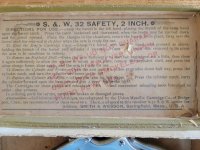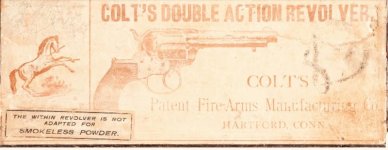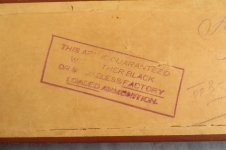Boulder350
Member
Here is an interesting 32 Safety Hammerless bicycle revolver with a box numbered to the frame. Serial number is 86xxx and its an antique first model. Has anyone seen this red stamp before that's on the inside of the lid? Is it a distributor stamp with the initials NB? Could it be stamped by the gun store that sold it?
The stamp reads:
N.B. - WE DO NOT GUARANTEE OUR REVOLVER WHEN USED WITH SMOKELESS OR NITRO POWDERS.
The bottom of the box has a red stamping on it too but I can't make anything out.
This one should probably have a Letter of Authenticity for it to see where it shipped.
The stamp reads:
N.B. - WE DO NOT GUARANTEE OUR REVOLVER WHEN USED WITH SMOKELESS OR NITRO POWDERS.
The bottom of the box has a red stamping on it too but I can't make anything out.
This one should probably have a Letter of Authenticity for it to see where it shipped.













